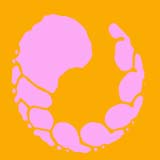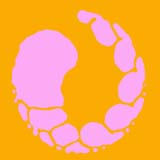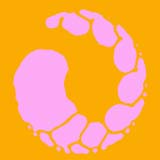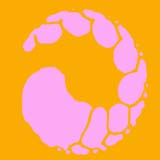| back
G e
n e s i s o f t h e a r t w o
r k | T e c h n i q u e
video
feedback as source material |
four frames of a video feedback, each lasting 1/25 second, composed of two separate fields* – the odd field and the even field lasting 1/50 second respectively |
| acrylic
paintings_ snap shots One of the main intentions of the acrylic paintings is to reveal the „hidden“ image content of video feedback. Therefore the recorded video feedback material has to be sifted through frame by frame. (In the case of a PAL system the frame rate is 25 frames per second and one frame is composed of two separate fields* – the odd field and the even field lasting 1/50 second respectively). Selected images are separated/digitised and computer processed in order to be able to project the motif onto canvas. Serial works - successive video frames - allow the movement of the shapes to be experienced. The colour choice of fore- and background accentuates these characteristics.     |
four sereal paintings of a video feedback, each lasting 1/50 second, separated odd and even fields of two frames (2/25 seconds) |
|
*
A TV or common video signal is “interlaced,” meaning that each full
“screen”
of information is composed of two separate “fields” – the odd lines and
the even lines. First the odd lines are painted on the screen. Then,
before
the odd lines have had time to completely fade, the even lines are
“painted”
in between the odd lines. This happens so quickly that it is difficult
for the human eye to perceive, especially when viewing moving images.
(In
case of a PAL System the frame rate is 25 frames per second and one
frame
is composed of two separate fields – the odd field and the even field
lasting
1/50 second respectively). Interlacing was developed because it allows
a high vertical resolution with a low amount of flicker while keeping
the
signal bandwidth to a minimum.
|
back ------ next |
| all rights reserved by barbara doser, vienna 2003 |